![]()
|
Petrus
Regout |
| NOTE: The
reason that Petrus Regout (whose factory was located in Maastricht) is mentioned in this list of North Staffordshire potters
is that he made efforts to give the impression that his ware was
English.
Some of his earlier pieces had a Stafford
Knot or the British
Royal Arms as a mark, he also sometimes used a diamond shape to give
the appearance of the British design registration diamond. At the end of the 17th century the Dutch Delft pottery industry had 45 manufactories with 10,000 workers. By the end of the 18th century, facing mounting competition from the North Staffordshire potteries, the industry had declined to 28 manufactories with as few as 280 workers and by 1850 only two potteries and 76 workers remained. Petrus Regout was a Dutch industrialist, initially trading as a merchant on glass and pottery - by 1836 he had established both a glass and pottery factory in Maastricht - this grew to be one of the most important Dutch tableware producers from the latter half of the 19th century until World War II.
|
Industrial Retardation in the Netherlands 1830–1850 p. 109-110; Richard Griffiths
Petrus Regout (1834-1899); Wikipedia
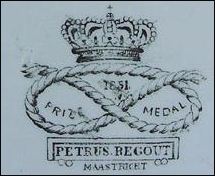
In imitation of the English, North Staffordshire Potteries, Petrus Regout used a Stafford Knot as a mark on the back of his ware. |

The letter 'R' diamond shape (probably for Regout) but designed to give the appearance of the British Patent office design registration diamond. |
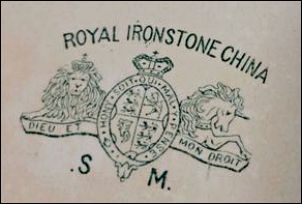
Petrus Regout mark with a copy of the British Royal Arms. |
| Petrus Regout used a style of marks to give the impression that his ware was English. |
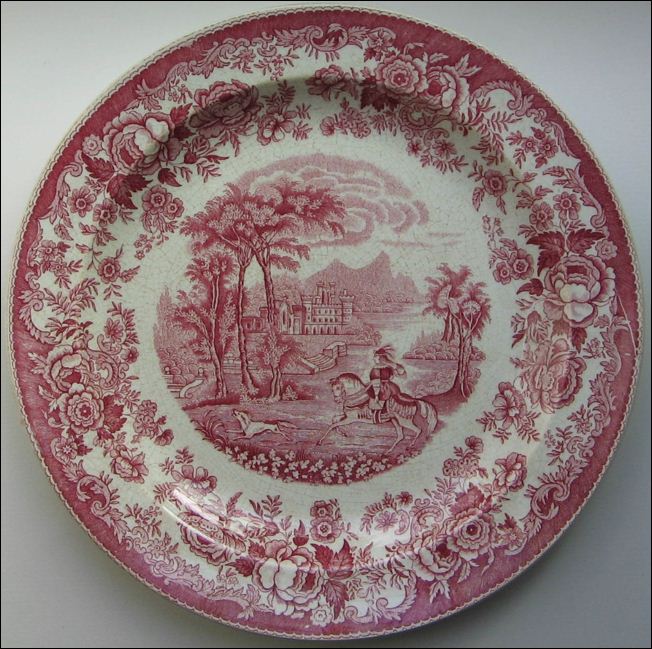 Petrus Regout plate in the Amazone c.1862-80 Although produced in the Netherlands the transfer ware pattern was typical of that of the North Staffordshire Potteries of the time |
'AMAZONE' is the pattern name 'PRIZE MEDAL' refers to the 1851 British Exhibition
|
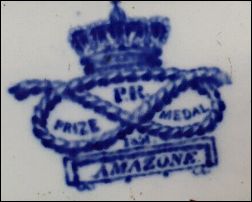 PR Prize Medal 1851 Amazone |
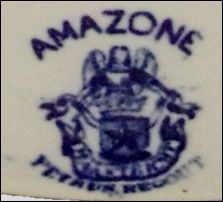 Amazone Maastricht Petrus Regout |
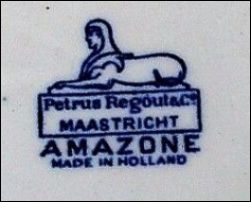 Petrus Regout Maastricht Amazone Made in Holland |
|
Amazone was a popular pattern for Petrus Regout these marks show the progression from a mark with the English Stafford Knot through to the mark with 'Made in Holland' |

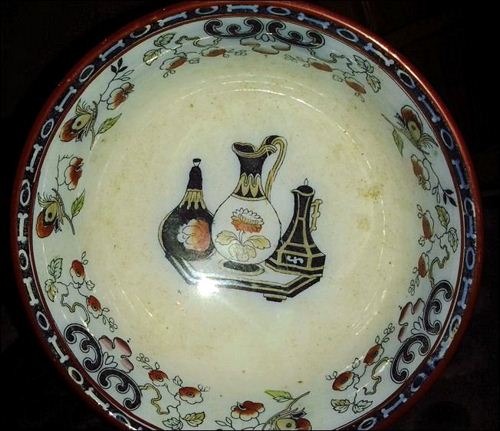
Petrus Regout bowl in the
Etruscan Vases pattern with the
Stafford Knot mark shown below

| Etruscan Vases was a pattern first produced by T & J Mayer c. 1841 and continued by a number of English potters - it was also made by Petrus Regout in Holland. |
|
c. 1860's. |
printed mark
|
| Petrus Regout ordered his copper plates directly from Staffordshire and
appears to be the only potter outside Staffordshire to apply the Prattware technique of using many different copper plates to produce multicolor patterns as seen on this plate.
The Title of this plate is "Zeepbellen" which translates as "Soap
Bubbles" - the original source of this pattern is the print titled "Blowing Bubbles" from the series "Le Blond Ovals" by G. Baxter published by Le Blond & Co in London around 1855. |
|
|
|
photos courtesy: Ivar Aamodt
|
c. 1910-20 the pattern is 'CAMBRIDGE' |
- named after one of England's ancient University Towns - |
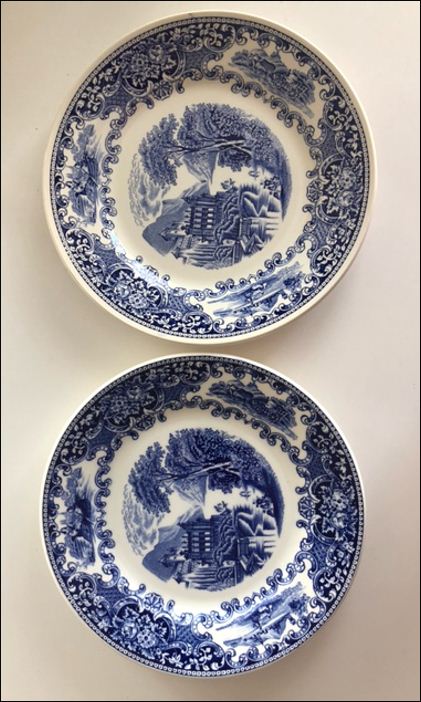 Bowls in the OLD ENGLAND series one produced by Royal Sphinx in Holland and one produced by Myott, Son & Co in England |
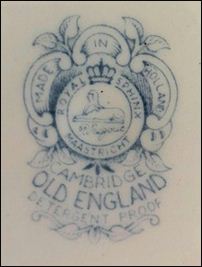
Made in Holland Royal Sphinx Maastricht Cambridge OLD ENGLAND
|
| Identical pattern produced
by Royal Sphinx in Holland and Myott, Son & Co
in England. It is probable that the pattern was licenced by Myott to Royal Sphinx and the transfer plates produced by the same engraver. |
photos courtesy: Allá Popova
Questions, comments, contributions? email: Steve Birks